Note: This is just for your reference—restaurants have their own artistic interpretations, so your sushi might look a little different... or like it's auditioning for a food art contest. If in doubt, just ask your waiter or waitress, “Hey, got anything that looks like this but tastier?” 😄🍣
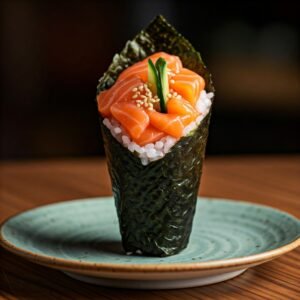
Spicy Salmon Hand Roll
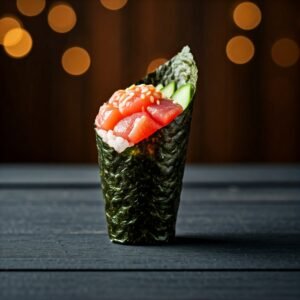
Spicy Tuna Hand Roll

Unagi (Eel) Roll

Cucumber Roll

Tuna Roll

Salmon Roll
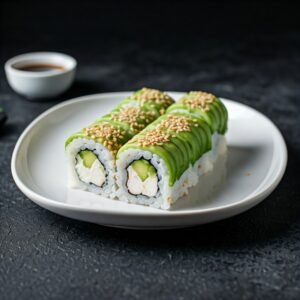
Cucumber & Avocado Roll
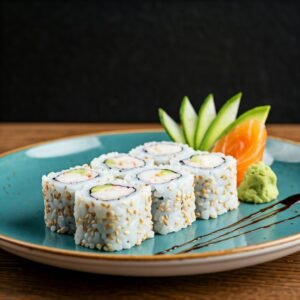
Crab Meat Roll

Chicken Teriyaki Roll

Spicy Salmon Roll

Spicy Tuna Roll

California Roll

Shrimp Tempura Roll
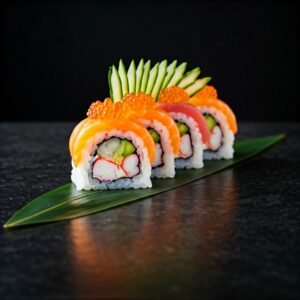
Rainbow Roll

Dragon Roll

Tempura Roll

California Roll

Dynamite Roll
Japanese Sushi
Sushi has gained worldwide popularity for several reasons: it is often regarded as a healthy option due to its low fat and high protein content, it offers great versatility with a variety of ingredients, and it showcases the high quality of fresh seafood. Additionally, sushi stands out for its visually appealing presentation and its deep cultural significance in Japan, where the craft of sushi making is a respected culinary tradition. These factors have contributed to its global recognition and adaptation to diverse tastes and preferences.
Fun Facts about Sushi:
- 1. Origins in Preservation: Sushi originally started as a method of preserving fish by fermenting it with rice. Over time, it evolved into the fresh, delicious dish we know today.
- 2. Sushi vs. Sashimi: While often confused, sushi refers to vinegared rice with various toppings, while sashimi is simply sliced raw fish or seafood.
- 3. World's Most Expensive Sushi: Chef Angelito Araneta Jr. created the world's priciest sushi, wrapped in 24-karat gold and topped with edible pearls and diamonds.
- 4. Sushi Etiquette: Traditionally, sushi is meant to be eaten in one bite, and it's perfectly acceptable to use your hands rather than chopsticks.
- 5. Bluefin Tuna Value: A single bluefin tuna once sold for over $3 million at Tokyo's famous Tsukiji fish market, highlighting the premium placed on fresh, high-quality fish.
- 6. Sushi Roll Variations: While Japan has traditional types like nigiri and maki, countries worldwide have created their own versions, like the California roll and dragon roll.
- 7. Wasabi Surprise: Most wasabi served outside of Japan isn't real wasabi but a mix of horseradish, mustard, and green food coloring. Authentic wasabi is made from a rare plant and has a milder, more complex flavor.
- 8. Conveyor Belt Sushi: Kaiten-zushi, or conveyor belt sushi, was invented in the 1950s to serve sushi quickly and efficiently, turning it into a fun dining experience.